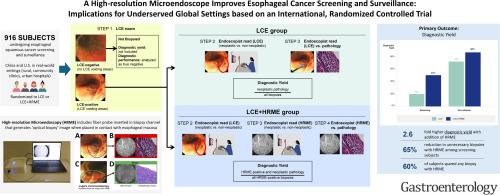当前位置:
X-MOL 学术
›
Gastroenterology
›
论文详情
Our official English website, www.x-mol.net, welcomes your
feedback! (Note: you will need to create a separate account there.)
A HIGH-RESOLUTION MICROENDOSCOPE IMPROVES ESOPHAGEAL CANCER SCREENING AND SURVEILLANCE: IMPLICATIONS FOR UNDERSERVED GLOBAL SETTINGS BASED ON AN INTERNATIONAL, RANDOMIZED CONTROLLED TRIAL
Gastroenterology ( IF 25.7 ) Pub Date : 2024-10-29 , DOI: 10.1053/j.gastro.2024.10.025 Mimi C. Tan, Zhengqi Li, Kalpesh K. Patel, Fan Zhang, Xinying Yu, Xueshan Wang, Daniel G. Rosen, Sanford M. Dawsey, Liyan Xue, Chin Hur, Richard A. Schwarz, Imran Vohra, Yubo Tang, Mengfen Wu, Tao Wang, Jennifer Carns, Hong Xu, Rebecca R. Richards-Kortum, Guiqi Wang, Sharmila Anandasabapathy
更新日期:2024-10-29
Gastroenterology ( IF 25.7 ) Pub Date : 2024-10-29 , DOI: 10.1053/j.gastro.2024.10.025 Mimi C. Tan, Zhengqi Li, Kalpesh K. Patel, Fan Zhang, Xinying Yu, Xueshan Wang, Daniel G. Rosen, Sanford M. Dawsey, Liyan Xue, Chin Hur, Richard A. Schwarz, Imran Vohra, Yubo Tang, Mengfen Wu, Tao Wang, Jennifer Carns, Hong Xu, Rebecca R. Richards-Kortum, Guiqi Wang, Sharmila Anandasabapathy

|


















































 京公网安备 11010802027423号
京公网安备 11010802027423号